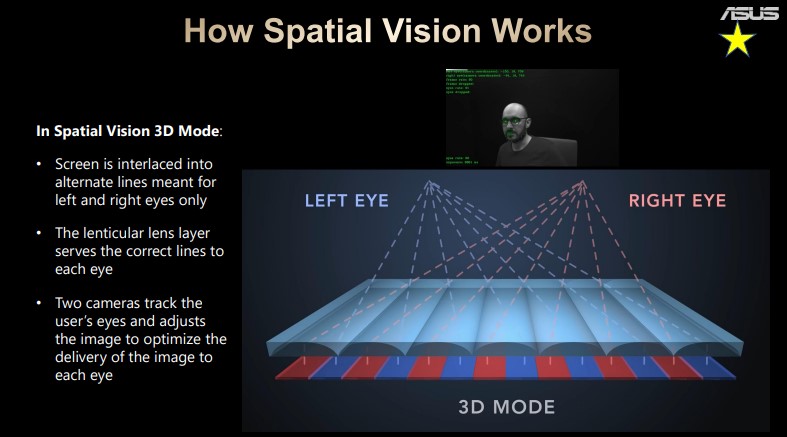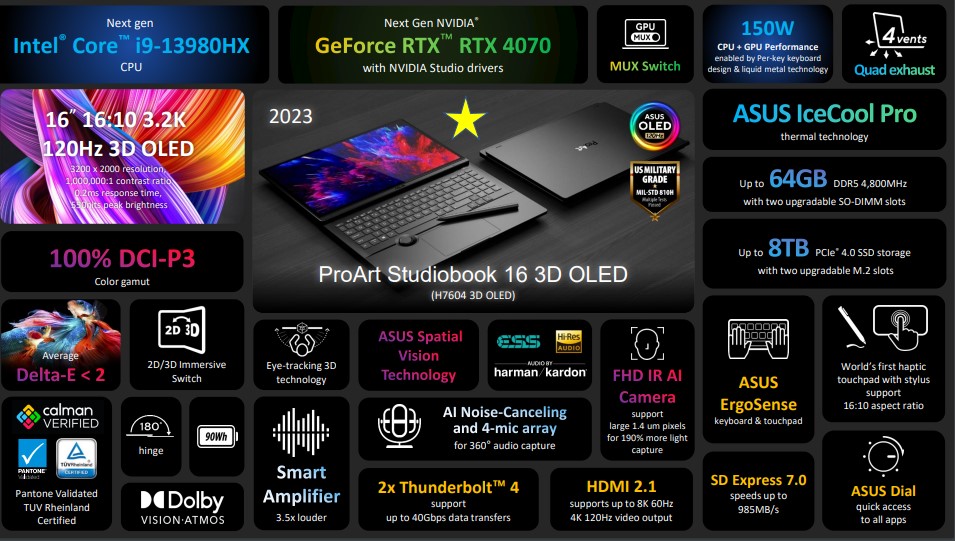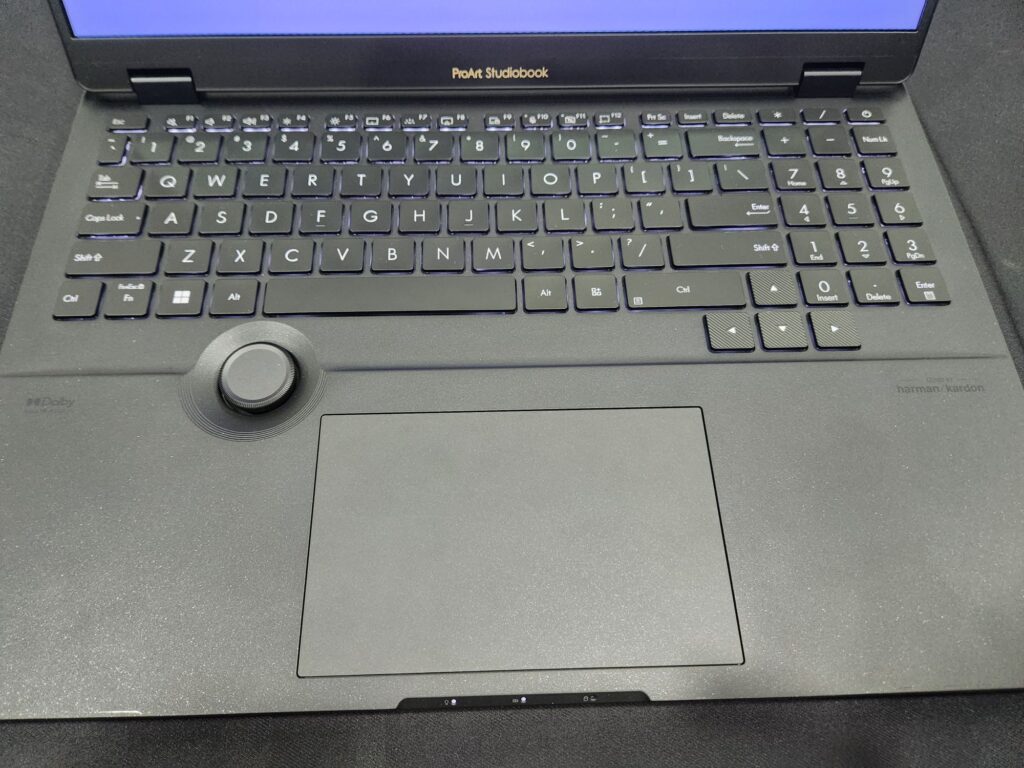
Asus ProArt Studiobook 16 3D OLED first look – glasses free 3D experience coming to Malaysia
One of the most interesting products to appear from ASUS’ foundries that aims to take 3D content to the next level made a quick whistle-stop tour in Malaysia after its initial debut at CES 2023. Unveiled alongside the rest of its slated line-up of Vivobook and Zenbook laptops that will arrive in stages across the year, the new ASUS ProArt Studiobook 16 3D OLED is, in a nutshell, is able to create a vivid three dimensional image in front of a user without the need for clunky 3D glasses.
ASUS ProArt Studiobook 16 3D OLED First Look – What is Spatial Vision tech?
If seeing is believing, the ASUS ProArt Studiobook 16 3D OLED laptop’s Spatial Vision 3D OLED display is a revelation indeed.
While 3D displays aren’t new with Acer trying their hand at it earlier a couple of years back along with an offering this year, ASUS is aiming to refine the concept even further to make it even more accessible for 3D modelling, engineers and more technically minded professions as the technology will be deployed not just on their super premium models like the aforementioned laptop but on more mainstream designs for the mass market as well like the Vivobook Pro 16X 3D OLED.
@hitechcentury Seeing is believing and this massive ProArt StudioBook 16 3D OLED has a lenticular 3D display that tracks your eyes to create a convincing 3D effect right before your very eyes! Watch how the 3D screen looks so vivid – the effect is even better in person! Take my money @asus!!!! #asus #ces2023 #techtok #studiobook #tech #fyp #malaysia #hitechcentury #proart @asussg ♬ In Love With You – BLVKSHP
Boiled down, the 16-inch 3.2K 120Hz 3D OLED display on the laptop uses what ASUS refers to as Spatial Vision Technology. In effect, ASUS has overlaid a lenticular lens layer on top of the display that can be activated on demand. The effect of the lenticular layer is somewhat akin to those three dimensional holographic trick images we’ve seen as kids where two images are interlaced between each other such that tilting an image slightly yields a different image to what is originally seen.
When the tech is off, it’s a conventional OLED display with two dimensional images displayed onscreen like a normal laptop.When you turn the Spatial Vision tech on, it activates eye tracking to tailor the three dimensional image to where you’re looking at, halving the screen and unfortunately the resolution into two separate zones for each eye to create the 3D effect.

Ideally, Spatial Vision is intended for a single person at a time to achieve the best effect as the tech thus far only seems to be able to track one pair of eyes at a time with a sweet spot of about 70-80 cm from the screen and a maximum of 100 cm to retain the 3D effect. While the idea behind Spatial Vision isn’t new, ASUS is leveraging the brightness, resolution and vibrancy of an OLED display backing it up to create a more vivid and believable 3D effect.
At present, the ASUS ProArt Studiobook 16 3D OLED laptop and its Spatial Vision tech supports almost anything that’s 3D including games, movies as well as modelling platforms like Blender, PyMol, Cinemas, Autodesk Naviswork, Creo, Autodesk 3ds Max, Vesalius3D,Autodesk Maya and 3D slicer along with support for 3D content like Steam VR, OpenXR, the Unity engine and the like.
The effect when seen in person is uncanny but vivid. While it doesn’t float in front of you, there’s a certain depth to an image and its manipulatable with the option to rotate it, zoom in and out and generally tinker about with it much in the fashion of Tony Stark’s sophisticated 3D interface in his lab, save it’s in a laptop.
ASUS ProArt Studiobook 16 3D OLED Specifications and First Look
Spatial Vision tech aside, the ASUS ProArt Studiobook 16 3D OLED itself is armed for bear. On top of the 16-inch 16:10 3.2K Spatial Vision 3D OLED display that’s also colour calibrated with 100% DCI-P3 and is also Calman Verified, the laptop itself can be kitted out with up to a 13th Gen Intel Core i9-13980HK processor, up to a whopping 64GB DDR5 4,800MHz RAM via two SO-DIMM slots, up to an two 4TB PCIe 4.0 SSD for 8TB of fast storage, and up to a GeForce RTX 4070 with Nvidia Studio Drivers and an MUX Switch. On paper, it’s rated to handle up to 150W TDP on account of a revamped cooling system with liquid metal.

Much like their other ProArt content creator laptops, the design has a physical and clickable ASUS Dial that works primarily with Adobe suite applications. The design itself also has a full suite of I/O including an ethernet port, two Thunderbolt 4 ports, a HDMI 2.1 port with support for up to 8K 60Hz video and more.
At the first look preview, we weren’t able to select what content we could watch or tinker with in 3D and the laptop itself was set to loop between two images of a bee and a mechanism of some sort but seen with the naked eye, the effect is rather convincing when you remain within the ‘visual’ sweet spot.

At present, there’s now word on the exact configuration coming to Malaysia nor what price it will be at save that it will be arriving sometime in Q3 2023. Once we get details, we’ll let you know but in the meantime stay tuned to their official page at https://www.asus.com/laptops/for-creators/proart-studiobook/proart-studiobook-16-3d-oled-h7604/
